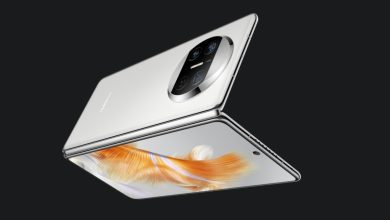Qualcomm shows off its plans for the future of Snapdragon: augmented reality, wireless audio and a big bet on PCs
The Snapdragon Summit 2022 has left a few news. Not only because of the already announced high-end mobile flagship chip announced yesterday, but also because Qualcomm has very interesting plans in the world of audio, PCs and augmented reality.

 The Snapdragon Summit 2022 has not only left us with the launch of the highly anticipated Snapdragon 8 Gen 2 but has also given us a broader look at Qualcomm’s plans in audio, augmented reality, and PCs. And they are pretty ambitious.
The Snapdragon Summit 2022 has not only left us with the launch of the highly anticipated Snapdragon 8 Gen 2 but has also given us a broader look at Qualcomm’s plans in audio, augmented reality, and PCs. And they are pretty ambitious.
The American company has taken the opportunity to update the Snapdragon Sound platform by introducing new generations of the S3 and S5 chips. They promise to raise the game in the wireless audio field with a few improvements.
On the other hand, Qualcomm has unveiled a new platform developed specifically for augmented reality glasses. This is Snapdragon AR2 Gen 1, which promises outstanding performance in exchange for low power consumption. In addition, several manufacturers have already committed to incorporate them into their developments.
In addition, the opportunity has been taken to highlight Qualcomm’s contribution to advancing artificial intelligence features in Windows 11. But that’s not all, as native Adobe Creative Cloud apps for computers with Snapdragon chips are also expected to be released next year.
Qualcomm sets out to take augmented reality glasses to another level

The Snapdragon above AR2 Gen 1 platform is one of Qualcomm’s big bets for next year. We are talking about a multichip architecture that promises to offer artificial intelligence performance up to two and a half times greater than the Snapdragon XR2 Gen 1, consuming half the energy.
The company intends to allow manufacturers to create glasses specifically designed for augmented reality that are comfortable and agile and go unnoticed. Qualcomm says the central processor takes up 40% less space on the PCB.
And since it is a multichip architecture—with a processor, a coprocessor, and a connectivity chip—it can be distributed in the structure of the glasses. Thus, the processor can be located on one pin and the connectivity sensor on the other; while the coprocessor is situated on the bridge between the two crystals.
Qualcomm says this will make it easier for manufacturers to create lightweight glasses with less bulky temples. In addition, the AR2 Gen 1 promises to easily integrate with mobile phones or computers that also use Snapdragon chips. In this way, for example, augmented reality glasses could divert a load of specific processing tasks to the devices with which they are paired.
Among the manufacturers already testing this new platform are LG, Xiaomi, Lenovo, Sharp, and Oppo, among others.














